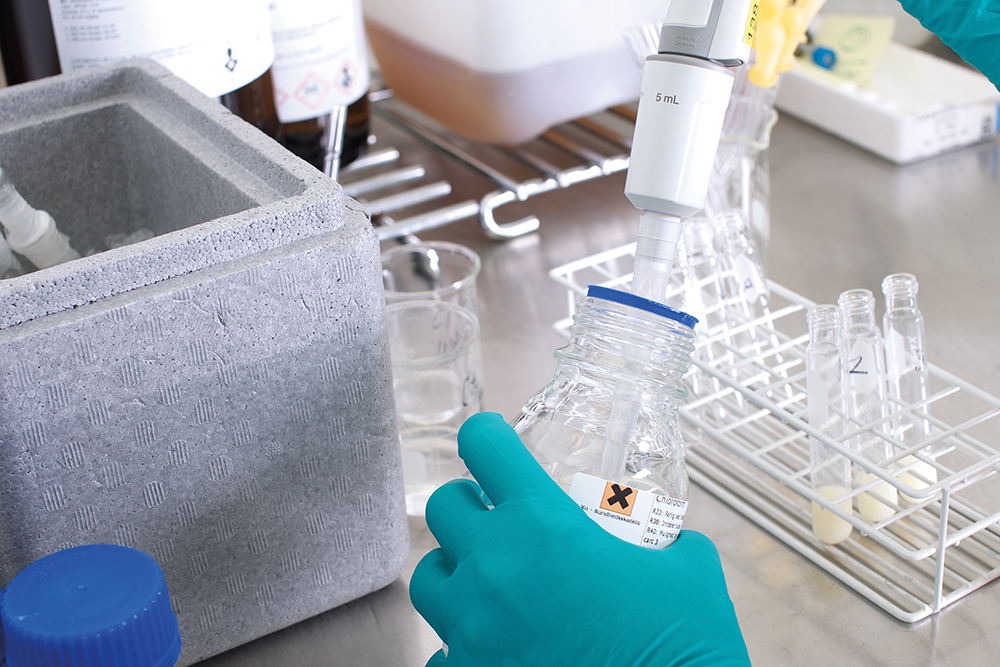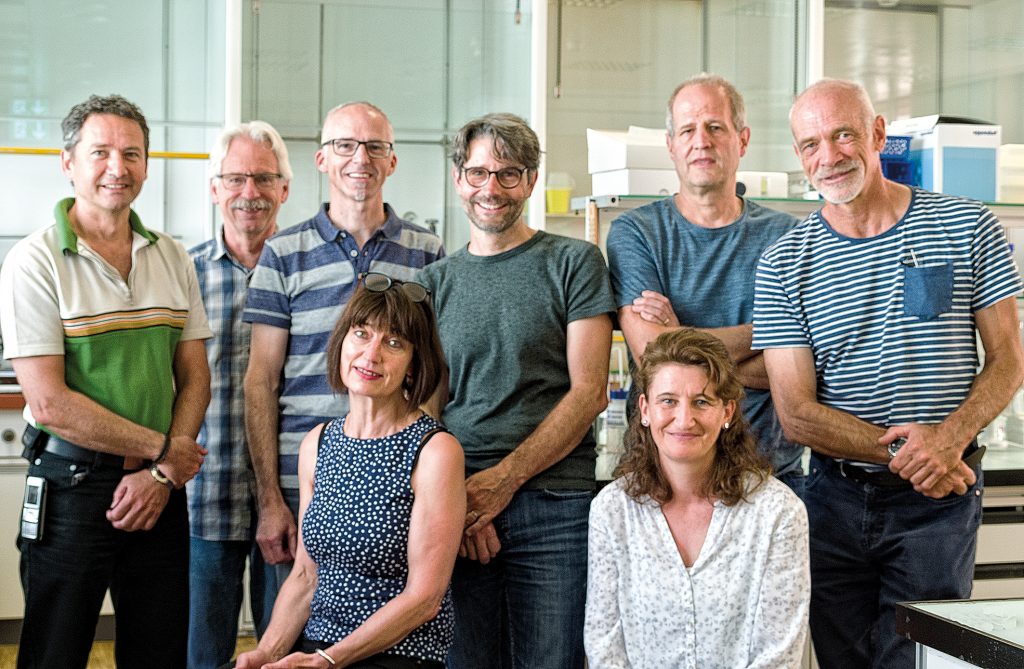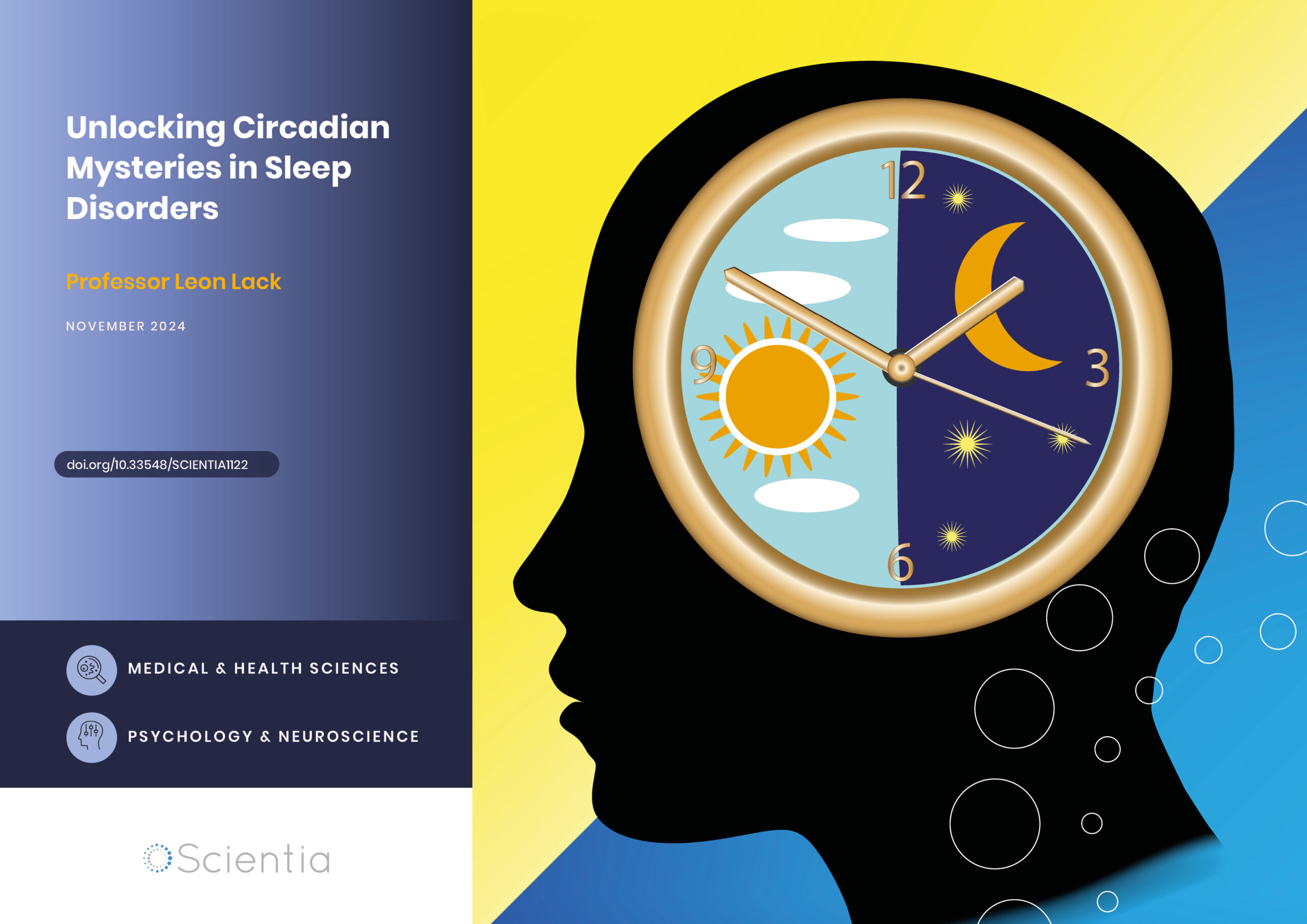Dr Christopher Hohl – Working Towards Safer Tattoos
The potential health risks of tattooing are known. However, many of the regulations which govern the practice of tattooing are somewhat relaxed compared to other industries. Dr Christopher Hohl and the Chromatography Section at the State Laboratory Basel-City, Switzerland, work to analyse the composition of tattoo inks and investigate the effects of tattooing to provide the authorities with the evidence needed to improve tattoo safety standards.
Tattoo Inks and Consumer Safety
A notable minority of the population is tattooed. Many of the health risks associated with tattooing are published. What is perhaps surprising, however, are the relatively few safety regulations which govern the sale and application of tattoo inks, compared to many other consumer products. The Chromatography Section at the State Laboratory Basel-City, Switzerland, is working to identify harmful substances associated with tattooing. One of the section’s goals is to gather evidence to help regulatory bodies enhance the current tattoo safety regulations and protocols.
Tattoo ink consists mainly of one half a mixture of individual pigments, and the other half solvents with dispersing agents. Each pigment is chemically diverse in structure and responsible for a specific colour. The pigments absorb specific frequencies of white light and reflect all others for the human eye to perceive. The frequencies of light absorbed are dependent on the precise chemical structure of the pigment.
The overall colour of an ink largely depends on the type of and relative quantity of each pigment present. Different shades of ink colours are achieved by adding either ‘carbon-black’ (which resembles soot) for darker shades, or titanium dioxide for lighter colours. Pigments are only sparingly soluble in solvents, such as water, alcohol and glycerine. Consequently, dispersing agents are added to help produce a more uniform mixture which can be easily injected under the skin.
From a consumer safety standpoint, the main issue with pigments used for tattoos is the complete absence of relevant tests in this respect. The reason for this deficiency lies in the origin of the pigments, which were not produced for usage in tattoos. Manufacturers developed them to be used in automotive, paper and plastic paints, for example, which are predominantly tested for their stability when exposed to sunlight without consideration of human toxicity. The range of concoctions available on the market presents a significant challenge to the Chromatography Section, who invest much of their time unravelling the composition of imported products. Ultimately, their research will help guide authorities on possibly banning the import and usage of harmful pigments.

Systematically Detecting Harmful Substances
There are several technical challenges which the Chromatography Section must overcome. Since the pigments are only sparingly soluble in common solvents, it is quite difficult to prepare analytical samples with detectable concentrations of the pigments. The background signals produced by many analytical instruments overlap and interfere with the signals produced by the sample. The section addresses this issue depending on measurement technique, by first removing much of the accompanying materials, including the solvent, prior to analysing pigments in the cleaned-up particulate matter. In other cases, the pigments are (partly) dissolved using special solvents.
Once the samples are ready, the Chromatography Section employs a range of analytical techniques which, in many ways, produce patterns of signals or fingerprint-like profiles which are characteristic of specific components of a mixture. By comparing the profile with known substances, the section can quickly identify whether a substance is present.
The main technique that the Chromatography Section utilises is called mass spectrometry (MS). The pigment samples are passed into the instrument, which then breaks down most of the sample into smaller fragments and fires everything towards a detector. When a pure, single pigment is analysed the signals are comparatively simple to interpret because they only represent the sample and its fragments. The collection of signals makes up the identifiable ‘fingerprint’. However, in relation to a mixture of components, as the section’s research entails, MS produces signals which overlap and are therefore difficult to assign. It becomes more difficult to determine the origin of each signal. This is very much like trying to identify one human fingerprint which has been overlapped by several other fingerprints.

Prohibited Pigments and Suspect Labelling
The specific type of MS that the Chromatography Section applies to pigments is known as ‘time-of-flight MS’. Every ink sample is made up of compounds with a different mass. Inside the instrument, the sample and its fragments are fired from the same starting position with the same kinetic energy towards a detector. The kinetic energy of a particle in the instrument is proportional to its mass and proportional to the square of its velocity. If all particles have the same kinetic energy then lower masses will migrate with greater velocities and vice versa. As a result, each particle is separated along a linear beam according to its mass: lighter masses collide with the detector before heavier masses, hence the term ‘time-of-flight’. Subsequent calculations then reveal the relative mass and probable identity of each particle.
The experimental approach is only qualitative, that is, it only shows which pigment was present in the sample. Time-of-flight MS does not indicate how much of each pigment was present in the ink sample.
In the literature, pigments are sometimes symbolised by a code, for example, ‘Pigment Yellow 14’ where the number identifies the specific pigment compound. In 2016, the Chromatography Section published their time-of-flight MS analyses of inks in use at the time. In samples gathered during market surveys between 2009 and 2017, the Section discovered that the prohibited ‘Pigment Green 7’ was the second most common pigment present! About 7% of legal pigments were not declared on the product labels while more worryingly, about 68% of illegal pigments were not declared. Some green inks which were labelled as mixtures of yellow and blue pigments which would explain the green colour, containing ‘Pigment Green 7’ which is banned in Switzerland. By analogy, several magenta inks, labelled as mixtures of red and blue inks, were found to contain illegal ‘Pigment Violet 19’. The section concluded that their findings were indicative of label forgery taking place somewhere along the supply line, highlighting the urgent need to review marketing and import procedures.

From left to right first row: Theresa Otz, Sandra Lang. Second row: Franz Dussy, Markus Niederer, Thomas Stebler, Urs Hauri, Urs Schlegel, Christopher Hohl. Absent: Nadja Ryser, Cornelia Hamberg.
Going Deeper, Under the Skin
Another theme of the research by the Chromatography Section looks at the fate of tattoo pigments after injection under the skin. Pigments are known to fade over time and this is partly due to the light-induced decomposition of tattoo pigment molecules. The energy of light can cause a pigment’s chemical bonds to break, changing the colour of the affected site. Other possible reasons for fading include the transport of the pigment molecules from the skin’s dermal layer to other parts of the body, as well as the chemical breakdown catalysed by nearby enzymes. In fact, the light-induced tattoo removal process by laser treatment follows very similar principles. Laser treatment simply accelerates the breakdown of pigments.
The fate of both legal and illegal pigments in the dermal layer has only sparsely been studied. Dr Hohl explains, however, that light-induced degradation of pigments can yield products, some of which are potentially cancer causing. He also argues that while most pigment molecules are almost water insoluble and may not present a health risk, this does not hold true for light exposed tattoo pigments located in the dermal layer.
Many compounds with a characteristic nitrogen-nitrogen double bond, of which many pigments are examples, break down to yield compounds which are potentially cancer causing. A commentary by the section revealed how much of a known carcinogen, derived from light exposed ‘Pigment Yellow 14’, is released over time. The section then extrapolated the trend to predict carcinogenic levels over several years. Overall, they estimated that ‘Pigment Yellow 14’ present over a tattooed area of about 400 cm2 adds about 5 extra cancer cases per 10,000 people. By comparison, smokers add about 420 extra cancer cases per 10,000 people. In the USA, one extra case per one million people is tolerable. Their report concluded that much work is needed to reduce the number of new tattoo related cases.

Fading Tattoos
The Chromatography Section set about modelling the effect of ultraviolet and visible light on tattoo pigments under the skin. Given the limited water solubility, pigments often exist as tiny crystals within the dermal layer. The section mixed known ink mixtures as a suspension in water, sandwiching the sample between two glass plates and then irradiating the plates with light. Not all pigments decomposed appreciably. The section found that for the cases where decomposition did occur, the process involved the breaking of the nitrogen-nitrogen double bond. Interestingly, the section found that the degradation of ink mixtures was generally faster than the degradation of pure pigments. They found that titanium dioxide sped up the light-induced breakdown of ‘Pigment Yellow 14’. These results show that pigment degradation as part of an ink mixture is quite different to the more simplistic model which studies pure pigments as samples.
The Chromatography Section also outlined a few limitations with their model, some of which represent areas of further study. They noted that they did not simulate the transport of pigments, or their breakdown products, from the site of injection. Consequently, the pigment components and their breakdown products would persist at their place of origin. This complicates matters because the residual compounds decompose on further irradiation or react further, yielding yet more products, when they would not normally do so in a human host.
Currently, safety standards in the tattoo industry are lacking. The vital work of the Chromatography Section will enable the authorities to review and raise the standards, and most importantly, protect the consumer.
Reference
https://doi.org/10.33548/SCIENTIA524
Meet the researcher
Dr Christopher Hohl
Chromatography Section
State Laboratory of Basel-City
Switzerland
The Chromatography Section headed by Dr Christopher Hohl is part of the State Laboratory of Basel-City in Switzerland. It is an official authority responsible for the enforcement of federal laws concerning, among others, the consumer safety of food and utensils of daily use. The section consists of Dr Hohl and three groups, each with a PhD chemist and two laboratory technicians. In their work, market surveys using chemical analysis are an essential tool for checking the legal conformity of products taken from the market. Chromatographic techniques used by the section include gas chromatography, high performance liquid chromatography, and high performance thin layer chromatography. In addition, time of flight mass spectrometry also plays an important role. The section is focussed on determining the organic compounds of health concern in cosmetics, toys, tattoo inks and e-liquids, including also biotoxins in food and beverage, as well as detecting fraudulent colouring of seafood. Confronted with a wide variety of problems, where analytical methods either do not exist or lack performance requirements, in-house method development is of utmost importance. The qualified and well-established section not only develops and employs innovative methods fit for purpose but uncovers previously unknown safety-relevant problems. One of these previously underestimated problems is the photodegradation of certain tattoo pigments.
CONTACTS
Main Topics Contacts
Biotoxins, e-liquids
Franz Dussy E: franz.dussy@bs.ch
Fraud with tuna fish meat, MOSH, MOAH in lip care, fragrances in cosmetics, pigments in tattoo inks
Markus Niederer E: markus.niederer@bs.ch
Compounds of concern in tattoo inks, cosmetics and toys, photolysis of tattoos and sunscreens
Urs Hauri E: urs.hauri@bs.ch
W: https://www.kantonslabor.bs.ch/ (in German)
Swiss Market Surveillance Study 2014 – Inks for tattoos and permanent make-up https://www.kantonslabor.bs.ch/dam/jcr:d12e5456-c71d-4e59-8f29-4a7d8c38d15d/Tattoo_PMU_2014_EN(UK).pdf (in English)
FURTHER READING
M Niederer, S Lang, B Roux, T Stebler, C Hohl, Identification of nitrite treated tuna fish meat via the determination of nitrous oxide by head space-gas chromatography/mass spectrometry, F1000 Research, 2019, 8, 711
S Schrack, C Hohl, W Schwack, Photooxidation of Octahydro Tetramethyl Naphthalenylethanone in Perfumes and Aftershaves, Photochemistry and Photobiology, 2018, 94, 965–974.
M Niederer, U Hauri, L Kroll, C Hohl, Identification of organic pigments in tattoo inks and permanent make-up using laser desorption ionisation mass spectrometry, F1000Research, 2018, 6, 2034.
C Hohl, U Hauri, Chemical Analysis: An Indispensable Means for Uncovering Severe Cases of Fraud with Cosmetics and Tattoo Inks, CHIMIA International Journal for Chemistry, 2016, 70, 357–359.
G Sabbioni, U Hauri, Carcinogenic Tattoos?, Epidemiology Biostatistics and Public Health, 2016, 13, e12018.
S Schrack, C Hohl, W Schwack, M Niederer,B Roux, Determination of cholesterol oxides by gas chromatography-flame ionization detection/mass selective detection and their occurence in lanolin-containing cosmetics and ointments, International Journal of Cosmetic Science, 2015, 1–7
U Hauri,· C Hohl, Photostability and Breakdown Products of Pigments Currently Used in Tattoo Inks in J Serup, N Kluger, W Bäumler (Eds), Tattooed Skin and Health. Current Problems in Dermatology, Basel, Karger, 2015, 48, 164–169. Doi:10.1159/000369225.
Want to republish our articles?
We encourage all formats of sharing and republishing of our articles. Whether you want to host on your website, publication or blog, we welcome this. Find out more
Creative Commons Licence
(CC BY 4.0)
This work is licensed under a Creative Commons Attribution 4.0 International License. 
What does this mean?
Share: You can copy and redistribute the material in any medium or format
Adapt: You can change, and build upon the material for any purpose, even commercially.
Credit: You must give appropriate credit, provide a link to the license, and indicate if changes were made.
More articles you may like
Professor Aristides Marcano Olaizola | Innovation in the Production of Singlet Oxygen
A novel method for producing singlet oxygen via stimulated Raman scattering (SRS) offers an innovative alternative to traditional photosensitizer-based techniques, promising safer and more efficient applications in disinfection, cancer treatment, and beyond. Professor Aristides Marcano Olaizola at Delaware State University is driving innovation in this critical field.
Dr Marta Berrocal-Lobo | Unlocking the Potential of Essential Oils: Illuminating Epigenetic Effects on Plant Defense Mechanisms
Essential oils (EO) are potent in enhancing plant stress responses and mitigating seed-borne diseases, particularly in high-value crops such as tomatoes. While their direct impacts are recognised, the indirect influences on plant growth, metabolism, and immune responses against phytopathogens remain uncertain. Dr Marta Berrocal-Lobo, an esteemed Associate Professor and researcher at the Polytechnic University of Madrid, in collaboration with the Group of Biopesticides led by Dr Azucena Gonzalez-Coloma, is unravelling the transcriptomic and metabolic responses of tomato seeds treated with an antifungal EO against the pathogen Fusarium oxysporum sp. Their findings pave the way for harnessing EO in sustainable agriculture.
Dr Linda Hammerich | Revolutionising Immune Monitoring with Flow Cytometry
Understanding the individual immune response is key to diagnosing and treating a range of diseases. One way of characterising immune cells is through flow cytometry, where cells are tagged with fluorescent markers known as fluorochromes. Detectors use these markers to understand the different physical and chemical features of the individual cells and the overall immune cell population. Dr Linda Hammerich and a team from Charité-Universitätsmedizin in Germany have optimised this technique to investigate up to 31 different cells or markers from one blood test using currently available technology.
Dr Leon Lack | Unlocking Circadian Mysteries in Sleep Disorders
Sleep disorders can significantly disrupt daily life, but their underlying causes are not always clear. Dr Leon Lack from Flinders University has spent decades studying these disorders and how to treat them. By shedding light on the role of circadian rhythms in delayed sleep-wake phase disorder and non-24-hour sleep-wake rhythm disorder, he hopes to unravel why some people struggle to maintain conventional sleep patterns and could lead to more effective treatments for these challenging conditions.




